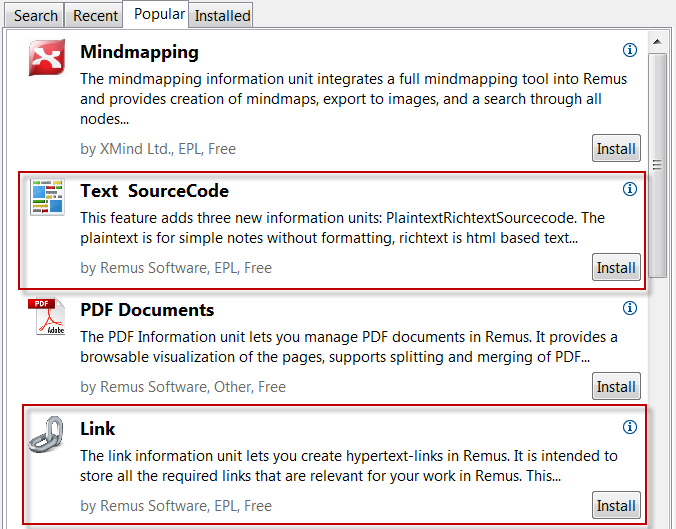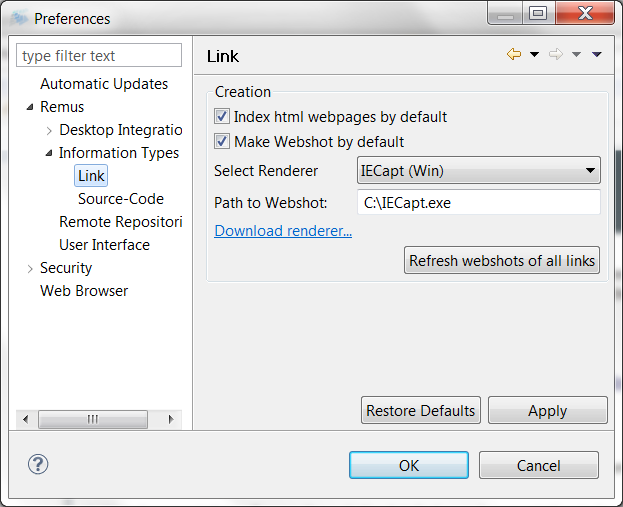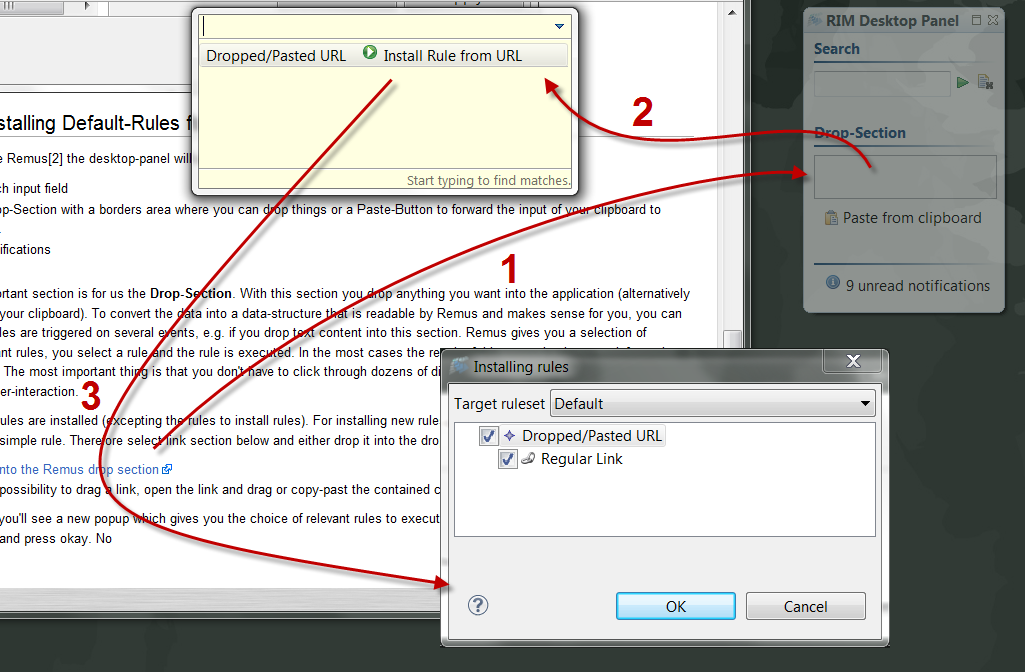Notice: This Wiki is now read only and edits are no longer possible. Please see: https://gitlab.eclipse.org/eclipsefdn/helpdesk/-/wikis/Wiki-shutdown-plan for the plan.
Remus/Setup Remus for Backlogging
The following Tutorial will show you how to setup a fresh install of Remus to use as a backlog for Links and Notes. At the end you'll have a configured instance which can be used for backlogging your links notes and source-code snippets that are immediately shared.
NOTE All screenshots are made with the Remus Standalone Build (RCP) if you use Remus in your Eclipse IDE the appearance will be slightly different. Some actions are different
Contents
Step 1: Installing the required information units
Therefore open the Eclipse marketplace[1] and install the information types "Link" and "Text" (see picture). This will install 4 new information types (LINKS, Unformatted Text, Formatted Text, SourceCode).
After the installation you'll be asked to restart the application.
Step 2: Setup the Webshot-Functionality (Optional)
An important feature for backlogging links to have a visual representation of the link. A webshot (a screenshot of the webpage) is optimal for this need. There a few free handy tools doing webshotting but unfortunately a distribution is not possible due to Licensing issues, you have to download the items for your own. To setup the webshotting open the Preferences at Remus->Information types->Links. Remus supports for each platform at least one webshotting tool.
- Select with the pulldown the tool for your operating system
- Click on the download link. You'll be redirected to the official page of the provider of the tool
- Download and unzip the tool into any location
- Enter the location to the recently extracted executable (for Mac: the location of the script) in the text field.
The following picture shows IECapt (Windows). The IECapt.exe is extracted into C:\
The setup of webshotting is optional and can be done also if you already have created information units in your workspace.
Step 3 Installing Default-Rules for creating links
If you minimize Remus[2] the desktop-panel will appear. By default it will have three desktop-sections.
- A search input field
- The Drop-Section with a borders area where you can drop things or a Paste-Button to forward the input of your clipboard to Remus.
- The notifications
The most important section is for us the Drop-Section. With this section you drop anything you want into the application (alternatively the content of your clipboard). To convert the data into a data-structure that is readable by Remus and makes sense for you, you can write rules. Rules are triggered on several events, e.g. if you drop text content into this section. Remus gives you a selection of possible relevant rules, you select a rule and the rule is executed. In the most cases the result of this execution is a new information unit is Remus. The most important thing is that you don't have to click through dozens of dialogs you can create a new information without any user-interaction.
By default no rules are installed (excepting the rules to install rules). For installing new rules Remus eats its own dogfood. At first we try to install a simple rule. Therefore select link section below and either drop it into the drop-section.
Drop this link into the Remus drop section
If you have no possibility to drag a link, open the link and drag or copy-past the contained content.
After the drop you'll see a new popup which gives you the choice of relevant rules to execute. Click on the "Install" Rule, select the Rule to install and press okay. Now what happened? The following image describes the workflow
- We have dropped the link to the Section. The rule engine will check if there is one or multiple rules that could deal with the data you have dropped
- You get a popup
TBD..Coffee break
References
- [1] IDE users have several markets installed. They have to switch to the Remus Marketplace (see the link under the content-listing)
- [2] IDE users have a separate Action with the Remus Icon in their main-toolbar.



